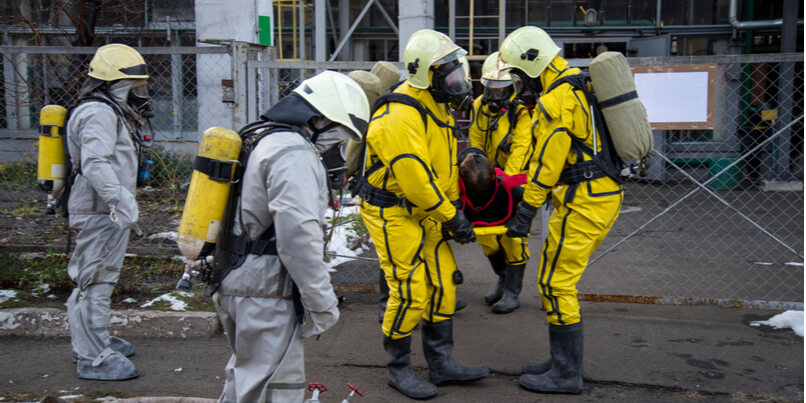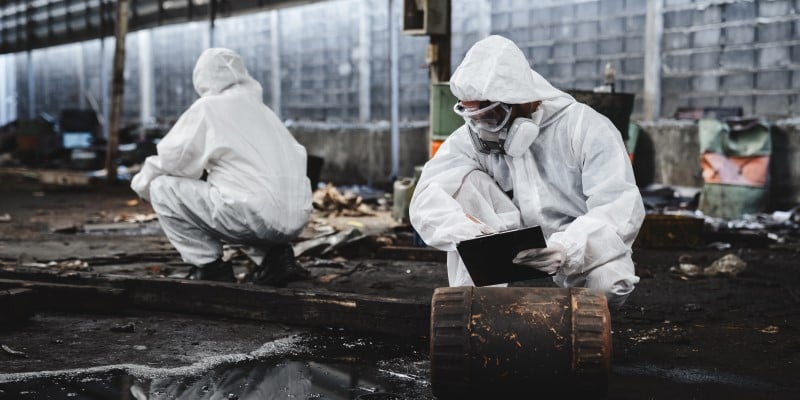 For those who work in, or in the vicinity of, environments where known quantities of ionizing radiation are in regular use, radiological surveying is a routine task.
For those who work in, or in the vicinity of, environments where known quantities of ionizing radiation are in regular use, radiological surveying is a routine task.
As a result they are likely to have a heightened familiarity both with the functionality of the equipment they use, and with the relevance of the dosimetric data that they obtain.
For those working within an emergency management or first response role, however, the possibility of encountering an ionising radiation hazard in the course of their daily duties is far less common.
When the presence of a radiological hazard is suspected, the confidence with which those first on the scene are able to handle their detection equipment, make sense of their readings and safely act on that information will be critical.
Training for radiological events
Radiological emergency training exercises can provide a valuable opportunity to test both individual and organisational preparedness, identify strengths and highlight areas for improvement.
Training for radiological events however is inherently complex, with the use of even the smallest quantities of live sources creating a potential minefield of administrative, regulatory and safety considerations.
The operational training objectives of each organisation can also vary widely, and there may be a varying focus on the need to provide practical, hands-on learning experiences.
A discussion-based tabletop exercise, for example, offers a completely hands-off training solution where participants can talk through the features of a hypothetical emergency, familiarise with roles and procedures and pinpoint any potential problems in an emergency plan.
If a greater degree of practical involvement is desired, then a command post exercise will simulate the organising and carrying out of command and control functions, sometimes even including the deployment of limited quantities of actual detector equipment.
Full-scale exercises, conducted in the field, can provide an even deeper level of realism - typically requiring the involvement of multiple agencies and employing the wider use of actual detection equipment, or their simulator equivalents.
Participation in hands-on radiological training exercises offers a variety of advantages for enhancing personnel competency, confidence and effectiveness in the field.
But while there is understanding of the importance of radiation safety training within emergency response, there is surprisingly little known about first responders' knowledge of radiation exposure or the extent of the training that they currently receive.
Building a picture of responders' radiological preparedness
An article which featured in the October 2019 edition of the online journal Health and Security, highlighted this very issue in its summary of the findings of a 2018/2019 study of 433 firefighters and emergency medical services (EMS) personnel.
The purpose of the project was twofold - to assess the respondents' understanding of the principles of radiation exposure and to build a picture of the nature and frequency of their access to radiological training exercises.
What the research revealed was that, on the whole, firefighters were offered access to more hands-on training opportunities than EMS personnel (with the exception of incidents that involved nuclear reactors.)
However, what was perhaps most significant was that just 14% of respondents reported they had been provided with the opportunity to take part in a hands-on radiological training exercise.
Assessing the value of hands-on training
In a study from 2017, the value of the conducting of emergency preparedness exercises was examined specifically within the context of the public health community.
The report compiled and reviewed existing evidence on the advantages and effectiveness of exercises.
It concluded that participants' competence, confidence and knowledge of emergency activities and procedures all significantly improved post-exercise.
Other immediate benefits included an improved perception of preparedness, and an increase in the understanding of individual roles.
From a wider organisational perspective radiological exercises were also found to provide the opportunity to identify gaps or limitations in protocols, to encourage further collaboration and to enhance team building.
Training for real-life radiological events
Radiological detection equipment has an essential role to play in enabling personnel to determine the nature and source of an ionising radiation hazard.
The information that is acquired is also vital in informing the decisions, practices and procedures that will resolve a radiological materials incident as safely and as efficiently as possible.
Given the infrequent nature of major radiological events it is vital that emergency personnel and first responders have the opportunity to practice and perfect their skills in as real-life a setting as possible.
Scenario-based training exercises - and the opportunity to get hands-on access to radiological detection equipment - can vastly enhance operational readiness, response time and individual competency.
When budgetary, administrative or regulatory restrictions make the use of actual live sources an impossibility, high-fidelity radiological simulator detector technology such as the Argon RadEye GF-10 can provide a highly realistic, responsive and cost-effective training solution.







